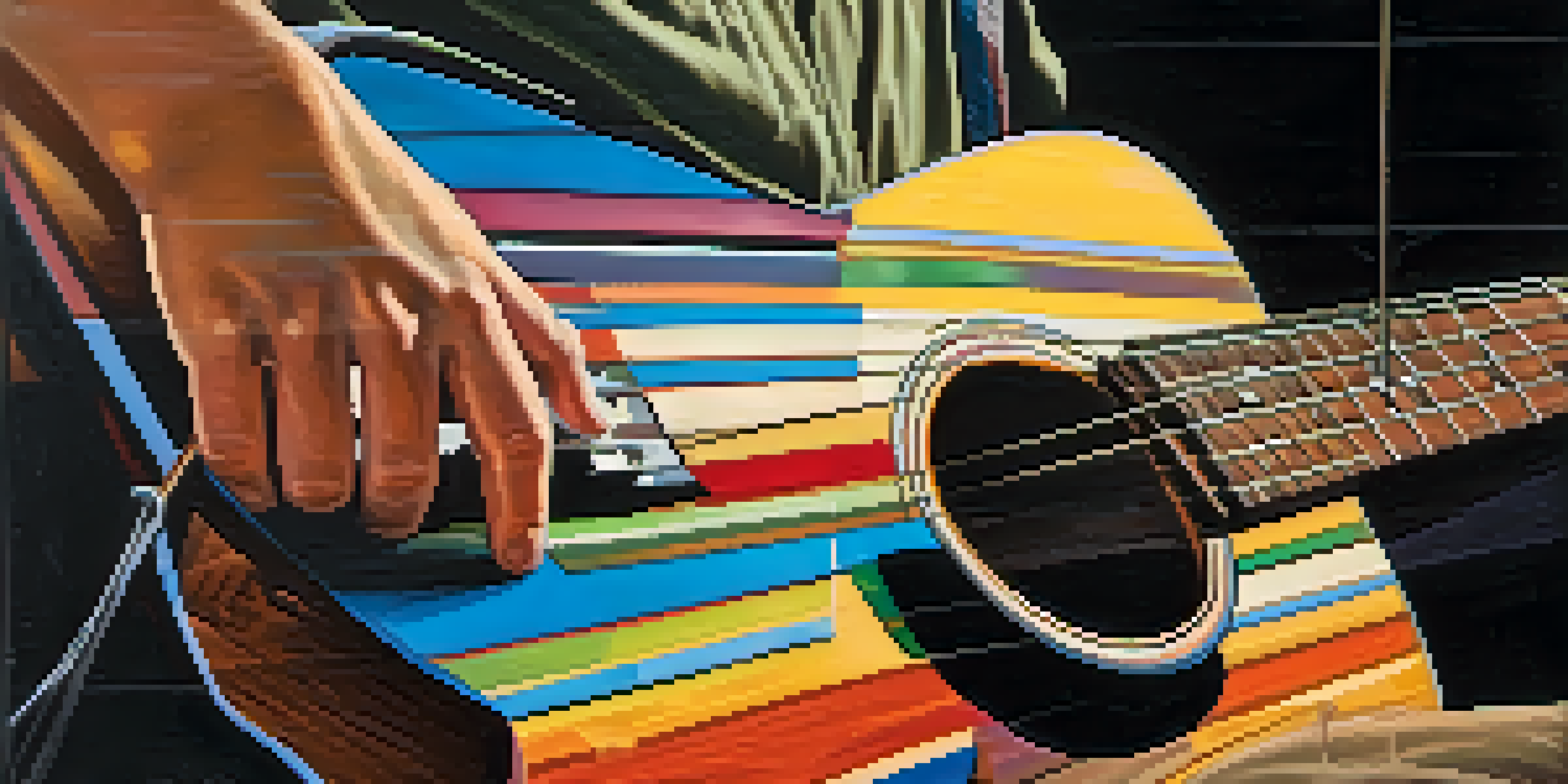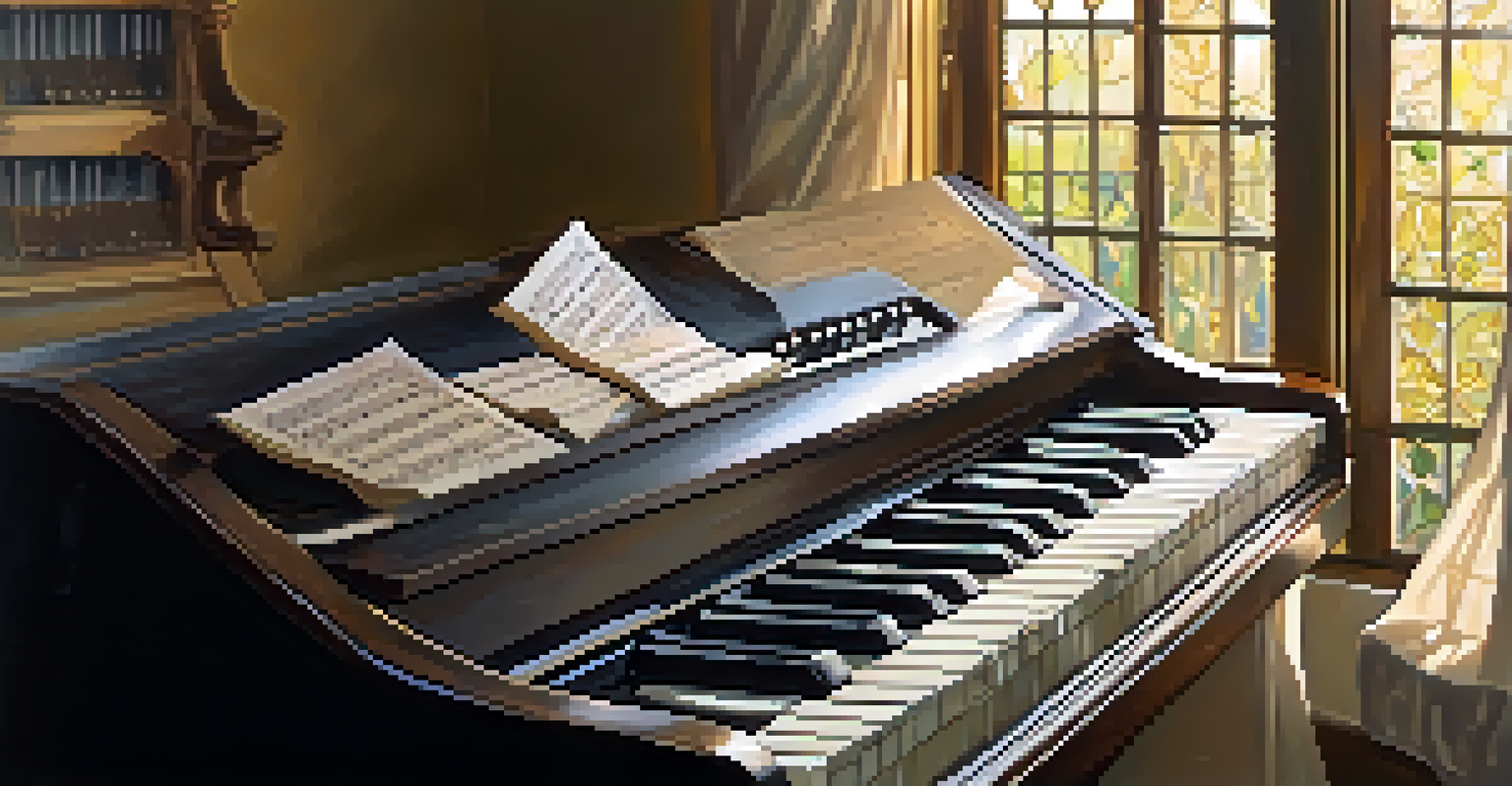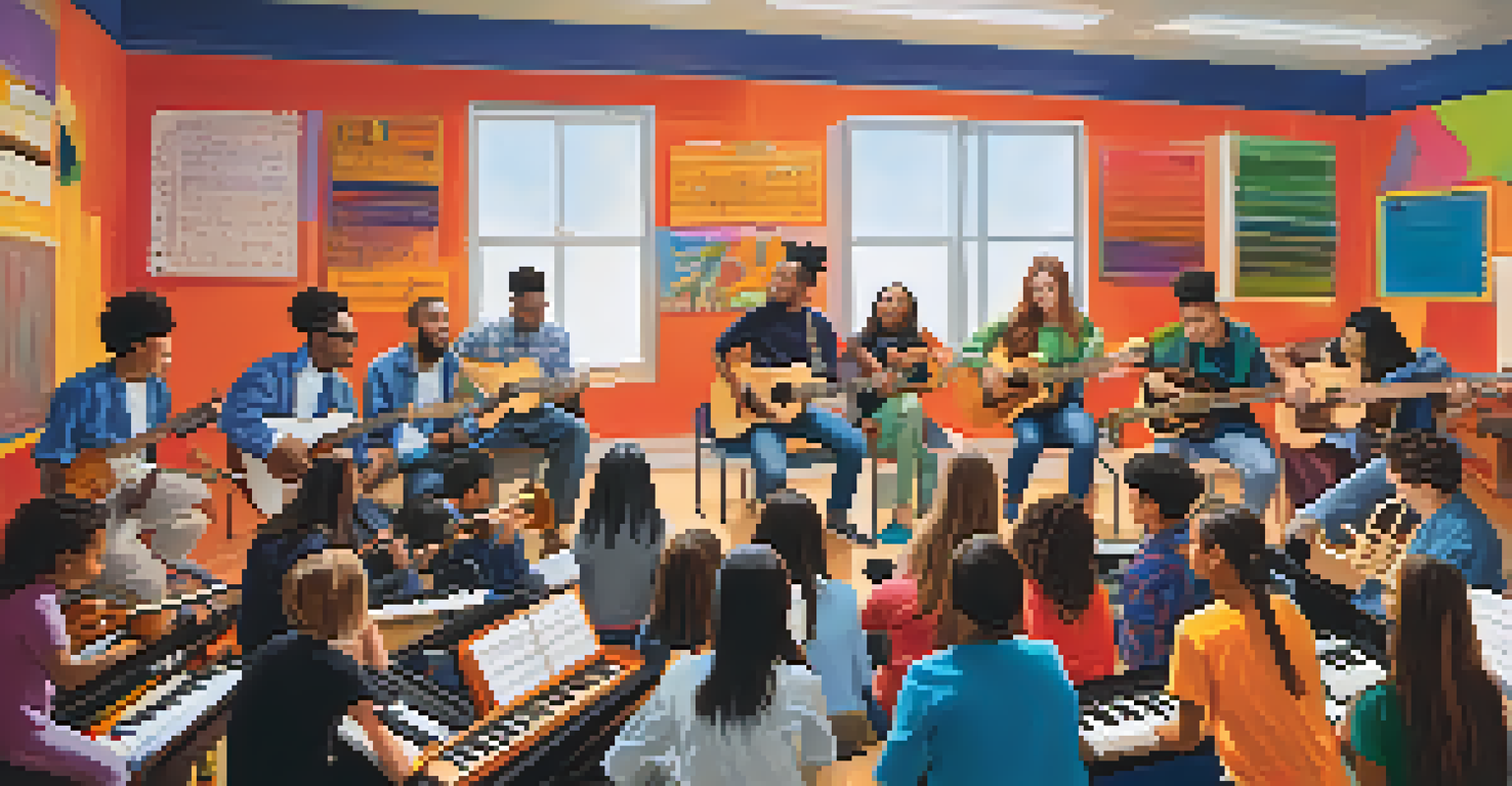How to Read and Write Chord Symbols in Music Notation

Understanding Chord Symbols in Music Notation
Chord symbols are shorthand representations of chords used in music notation. They allow musicians to quickly identify the harmony of a piece without needing to read complex sheet music. Essentially, these symbols tell you what notes to play and the relationship between them, making it easier to collaborate and improvise.
Music is the shorthand of emotion.
For instance, a symbol like 'Cmaj7' indicates a C major seventh chord, which consists of the notes C, E, G, and B. This simplicity is what makes chord symbols particularly useful for guitarists, keyboardists, and other instrumentalists who often play from chord charts. By understanding these symbols, you can navigate through various genres of music with confidence.
Furthermore, chord symbols can vary slightly depending on the style of music and its conventions. Familiarizing yourself with these variations will enhance your ability to interpret music across different contexts, whether in jazz, pop, or classical settings.
The Structure of Chord Symbols Explained
A chord symbol typically consists of a letter name indicating the root note, followed by additional information about the chord's quality. For example, 'A' denotes an A major chord, while 'Am' indicates an A minor chord. These simple notations provide essential information about the chord's sound and emotional character.

In addition to the root and quality, chord symbols may include numbers and symbols to convey further details. For instance, 'C7' signifies a C dominant seventh chord, while 'Cmaj7' specifies a C major seventh chord. Understanding these nuances can greatly enhance your musical vocabulary and expression.
Understanding Chord Symbols
Chord symbols are essential shorthand that simplify music notation, enabling musicians to identify chords quickly.
Moreover, musicians often use chord extensions and alterations to add complexity to their playing. Symbols like 'C9' or 'C#11' illustrate these advanced concepts, which can enrich your harmonic palette and elevate your musical arrangements.
Common Chord Symbols and Their Meanings
Some of the most frequently used chord symbols include major, minor, diminished, and augmented chords. Recognizing these basics is crucial for any musician, as they form the foundation of countless songs. A major chord is often represented simply by its root note, while a minor chord is denoted by adding an 'm.'
The beautiful thing about learning is that no one can take it away from you.
In addition, seventh chords are vital to many musical genres. Common examples include the dominant seventh ('7'), major seventh ('maj7'), and minor seventh ('m7'). Knowing these will allow you to grasp the harmonic structure of many popular songs.
Lastly, don’t forget about suspended chords and add chords, such as 'Csus4' or 'Cadd9.' These symbols indicate variations that create unique sounds and textures, providing more depth to your music. Understanding these basic symbols is the first step toward mastering chord notation.
How to Read Chord Symbols Effectively
Reading chord symbols may seem daunting at first, but with practice, it becomes second nature. Start by familiarizing yourself with the most common symbols and their associated sounds. A great way to do this is by playing along with simple songs that use basic chord progressions.
As you practice, pay attention to how different chords transition from one to another. This will help you understand the flow of music and enhance your ability to anticipate changes. Try playing with a friend or joining a group, as collaboration can significantly accelerate your learning process.
Reading and Writing Chord Symbols
Familiarity with chord symbols enhances musical collaboration and expression, making it crucial for musicians to read and write them effectively.
Additionally, don’t hesitate to use resources like chord charts and online tutorials. These tools can offer valuable insights and exercises to reinforce your understanding. The more you immerse yourself in reading chord symbols, the more intuitive it will become.
Tips for Writing Chord Symbols Correctly
When writing chord symbols, clarity is key. Ensure that your symbols are legible and correctly formatted so others can easily understand your notation. This is especially important if you plan to share your music with other musicians, as clear communication is essential in collaborative settings.
Use consistent formatting throughout your notation. For example, always use uppercase letters for major chords and lowercase for minor chords. Avoid mixing styles, as this can lead to confusion. A well-organized chord chart not only looks professional but also helps maintain the musical integrity of your work.
Lastly, remember to include any necessary symbols or numbers that provide additional context. If a chord requires a specific voicing or alteration, make sure to note that clearly. This attention to detail will ensure that your written music is as effective as your playing.
Exploring Advanced Chord Symbols and Techniques
Once you're comfortable with basic chord symbols, it's time to explore more advanced notation. This includes altered chords, extended chords, and complex voicings that can add richness to your music. Understanding these concepts can significantly expand your creative possibilities.
For example, a chord symbol like 'Cmaj9' indicates a C major chord with added ninth. This extension can create a more sophisticated sound, perfect for jazz or contemporary styles. Learning how to voice these chords on your instrument will elevate your playing and composition skills.
Exploring Advanced Chord Techniques
Advanced chord symbols and techniques, such as extensions and inversions, allow musicians to enrich their sound and creativity.
Additionally, consider integrating chord inversions into your playing. These are variations of a chord where the notes are rearranged, offering different textures and emotions. By mastering advanced symbols and techniques, you'll be well on your way to becoming a versatile musician.
Practicing Chord Symbols in Real-World Scenarios
The best way to solidify your understanding of chord symbols is through practical application. Start by selecting a few songs you love that feature chord symbols prominently. Playing along can help reinforce your knowledge and improve your sight-reading skills.
Consider using backing tracks or play-along apps that provide a chord progression. This will give you a real-world context for applying what you've learned. As you play, focus on transitioning between chords smoothly and accurately, which is crucial for live performance.

Finally, don’t forget to experiment with writing your own chord progressions. This creative exercise can help you internalize the symbols and their meanings while encouraging you to explore new musical ideas. The more you practice, the more confident you’ll become in using chord symbols effectively.